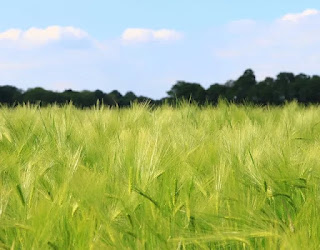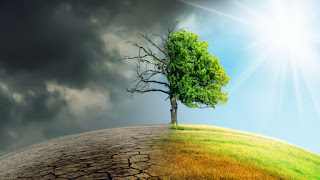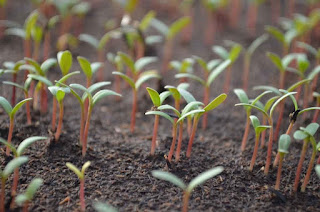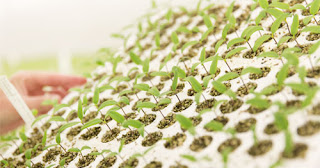Optimize crop yield: key takeaways from soil salinization report
Salinization of Soil - What Is It?
Excessive salt accumulation in the soil is known as soil salinization. NaCl is commonly used in this process. In addition to these, the list also includes various sodium, potassium, calcium, magnesium, sulfates, chlorides, carbohydrates, and bicarbonates. The salt-affected piles of the earth are generally classified as saline, sodic, and saline-sodic, depending on the type of salt content.
Water absorption is one of the primary effects of soil salination on plant growth. The inability to absorb enough water even when the soil is sufficiently moist causes crops to wilt and die. The report of the Intergovernmental Science-Policy Platform on Biodiversity and Ecosystem Services (IPBES) of 2018 reveals that as a global scale:
Approximately 190 million acres have been completely destroyed; There is damage to 150 million acres; Salinization affects 2.5 billion acres.
Soil salinization: what causes it?
The earth becomes salinized when soluble salts are retained. Inappropriate anthropogenic activities, such as farming, can lead to it naturally or artificially. Moreover, some earth is saline at first due to their low salt dissolution rates. The following factors contribute to the salinization of soil:
Low precipitation due to dry climates and excessive salts that aren't flushed from the ground; the rate of evaporation is high, causing the ground surface to accumulate salts.
Waterlogging and poor drainage caused by the inability to transport water; the use of salt-rich water for irrigation, which reinforces earth's salt content; raised water tables and the removal of deep-rooted vegetation result from this process;
Geological deposit leakage and groundwater penetration;
when salts from the sea infiltrate lower lands, sea levels rise;
salty air masses blowing from coastal areas to nearby territories; salt evaporation after submergence in seawater;
Excessive nitrification accelerates soil salinization when fertilizers are applied improperly.
Salinity indicators of soil
A good way to detect salinization is by examining the soil surface, the rate at which water is absorbed, and the condition of the plants. Salinization signs become more serious over time. An apparent white color on the surface is indicative of salt crystals. It is also possible to detect excess salt indirectly. A salty taste or poor water quality will cause animals to refuse to drink water.
Understanding impact and solution for soil salination with a study:
Irrigation potential has been developed throughout the world with huge investments. Recent food shortages have raised the issue of improving water management and efficiency to obtain greater benefits from irrigation.
For practical methods of maintaining optimum conditions for maximum output per unit of water, it is vital to know how plant growth cycles relate to moisture and salinity levels in the root zone.
Understanding how root zone moisture and salinity levels relate to plant growth cycles is crucial to maintaining optimum conditions for maximum output per unit of water.
One of the studies defines the role of irrigation timing and salinity management in predicting crop response to irrigation timing and salinity management, as well as providing practical approaches to predicting crop response to irrigation timing and soil salination management.
According to the report, the following are some of the advantages of the research program:
1. It is unique in that a sprinkler line is used as the sole source of water throughout the entire experiment. Water supply influences yield significantly as determined by this approach.
The following information is provided by these data:
a. Accurate measurement of a crop's water requirements.
b. When deficits should be accumulated during various stages of crop growth.
c.Establishing relationships between yield and evapotranspiration from rainfall (dryland) to overirrigation.
d. In order to assess the contributions of soil water holding capacities to the water needs of crops.
This information will help you determine how to utilize the root system of a given crop type based on how long it takes to collect water during the growing season. This information can influence when to plant, how to space plants, and how to fertilize.
2. Besides water, the experimental setup lends itself to a study of the effects of other input parameters on plant growth, such as fertility levels and plant spacing.
3. The experiment can easily be adapted to accommodate several kinds and/or species of animals.
4. This study applies to a wide variety of crop, climate, soil, and water supply conditions (both non-site-specific and site-specific).
5. Using visual and quantitative methods, the research demonstrates the benefits of effective crop management.
6. Specifically, the study examines how soil salinity and available soil measures affect plant yields, both in the United States and internationally.
7. Developing countries can apply the research techniques readily.
a. Though desirable, a sprinkler system for irrigation is not necessary.
b. There are many advantages to this research, including its simplicity, low cost, ease of use, and wide range of information.
8. Research is a joint effort involving several institutions and highly experienced researchers who have a proven record of working well as an integrated team.
9. The validity of the approach and viability of the results have been demonstrated by a review of current research. Among the remaining tasks is to broaden the range of crops and demonstrate that the results can be applicable to other regions.
Soil salination




Comments
Post a Comment